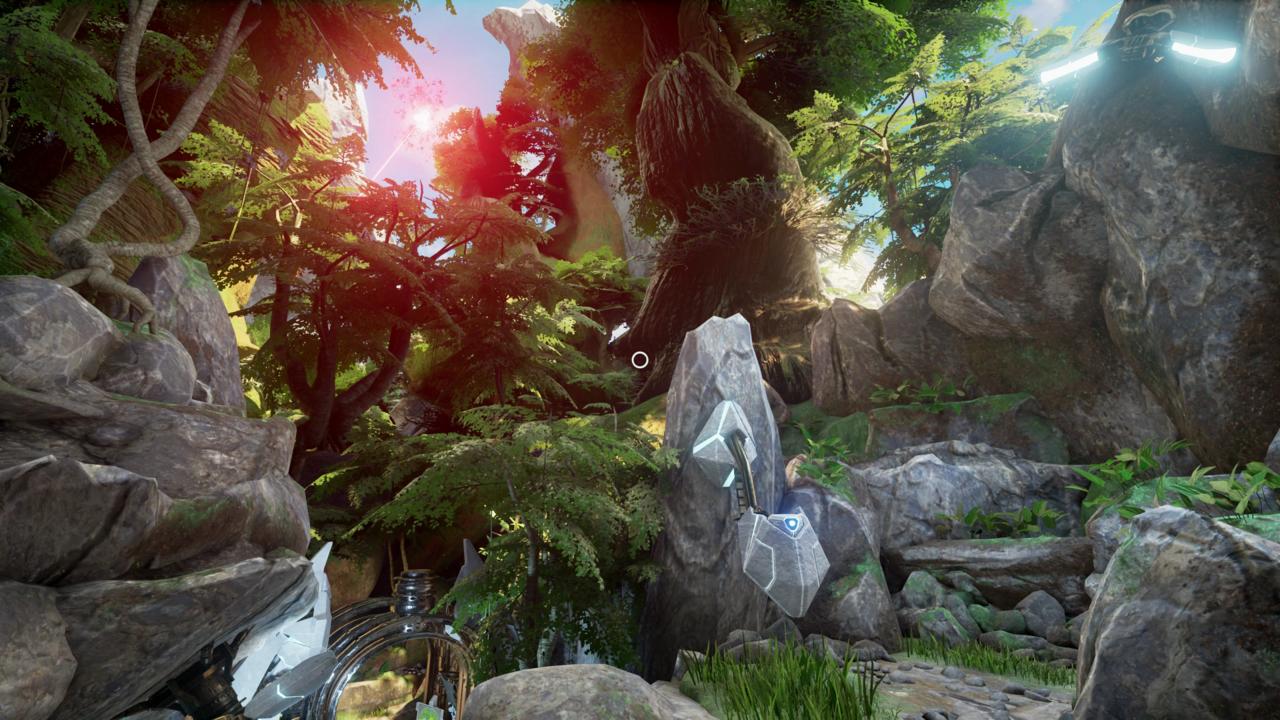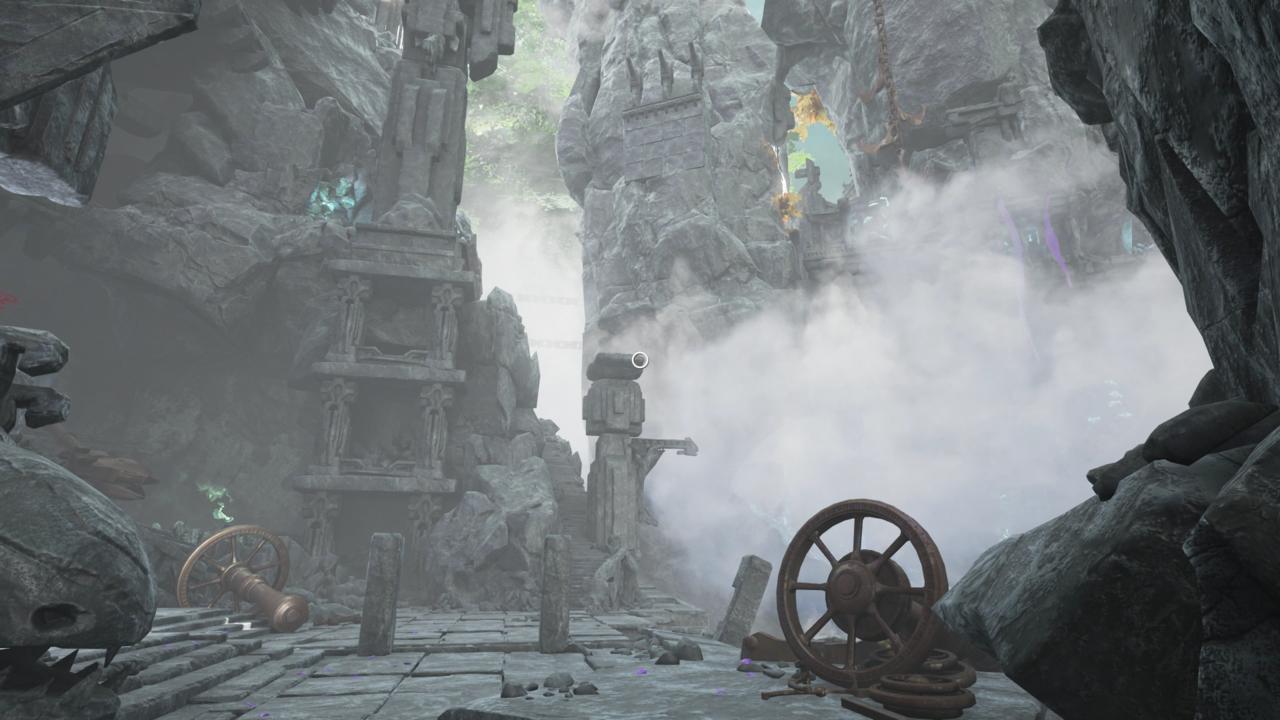I often got real, physical headaches while playing Obduction. Towards the end of the game, I’d regularly get completely stuck when trying to solve a puzzle, decide I was missing something vital to its solution, and proceed to run back and forth through the game’s sizeable world, searching every area multiple times, eyes glued to the screen. I’d take a wrong turn in a thick forest, retrace my steps, get lost again, and then get mad at myself.
But when I eventually did stumble upon that missing link--an obscured set of stairs, a line in a book I’d previously dismissed--the pieces fell into place, and my frustrations all but disintegrated. I'd unlock a majestic gate, the soundtrack would swell, and I'd discover a breathtaking new region, full of fresh, difficult puzzles.

Created by the same developers behind classic adventure games Myst and Riven, Obduction presents a eerie world filled with tough puzzles to solve and intriguing lore to uncover. At the start of the game, you’re transported to an area that’s immediately stunning and perplexing--rocky desert mountains smattered with distinct American architecture from throughout history: an Old West frontier town, a 1950s gas station, a graffitied rail yard.
While this initial sun-drenched area feels invitingly warm on first glance, there’s also an underlying sense of otherworldly menace. Distant horizons are lined with enormous purple crystalline formations and floating islands. The occasional waft of tense violins in the soundscape lends the familiar architecture an off-kilter slant. Real-world actors portray strange characters in odd hologram messages, and every part of that feels a little out of place. And even though you seem to be alone, the bizarre nature of the environment stops you from feeling in control.
Obduction emphasises player discovery, and while you're given some broad direction in the beginning, it quickly falls away. Obduction doesn’t draw attention to its obstacles--there’s no strict order of progression, and its puzzles are hidden in plain sight as part of the environment. Key items aren't highlighted by default (the option to turn them on is labeled as a “hint” system) and only reveal themselves as interactive objects when you get close enough. In order to both discover and solve problems, you’re required to scour the meticulously detailed world to find levers, switches, cryptic clues, narrative details, ciphers, and other useful items.
Characteristic of Obduction's roots in the Myst series, it’s the game’s encouragement for discovery that makes puzzles fun--and it’s their complex, mechanical nature that makes them so satisfying to decipher. Obduction’s obstacles often involve manipulating physical objects and contraptions. Punching buttons to enter a code or dragging your mouse to pull a lever gives each step in a puzzle’s solution a pleasing, tangible quality. Rumbling iron gears and mysteriously high-tech gates make for a wonderful audiovisual reward on top of the gratification that comes from resolving a tricky puzzle.
However, Obduction is unrelenting in its lack of player assistance, and some solutions are more obscure and obtuse than others. While you have the option to make some objects glint unnaturally, keying you into their importance, some clues are purely visual and provide no indication of how they might interact with other clues, if at all. In every case, it’s completely up to you to connect the dots and to figure out how an object or clue might be useful. It can be invigorating to have a sudden breakthrough and rush to test your theory, but the process can also be incredibly draining. I frequently felt stumped or completely baffled, but this depends upon how observant you may or may not be at the time.
This directionless feeling does initially enhance the mystique of the game’s first half, when locations are mostly undiscovered and you lack a holistic understanding of how the world works--new discoveries are especially magical at this point because they are full of unknowns. But challenges become increasingly difficult and complex, and a lapse in patience or observation can lead to punishing gaps in your knowledge of the world's logic, which can take a painful amount of time to identify and ultimately resolve. One overlooked clue can completely halt your momentum and cost you large amounts of time, making rewarding successes fewer and further between.

In its final hours, Obduction introduces intricately grand puzzles that involve environmental manipulation and traveling between different, interconnected locations at predetermined points. Although clever, these scenarios often require a large amount of backtracking and the endurance to withstand a collection of loading screens as you travel back and forth--a process that grows increasingly exhausting. Because of the size of the game’s world and the numerous mechanisms that can restrict access to certain routes, getting lost while backtracking can also become a very real frustration and increase the chances of missing vital clues. This is an experience that requires you to play with patience, but there are times when your best intentions aren't enough.
Although you may feel at odds with Obduction's late-game complexity, it still feeds into an incredibly alluring world that earns intimate engagement. Its puzzles require keen observation and perseverance, and while player-made missteps can lead to mental fatigue, Obduction's commitment to keeping the onus of discovery on you means that deciphering the game’s intricate puzzles is often gratifying despite occasional frustrations along the way. Just make sure to take breaks and clear your head once in a while.